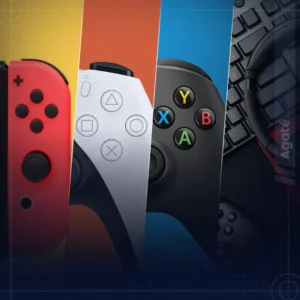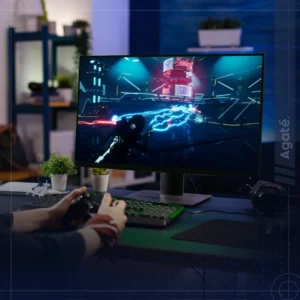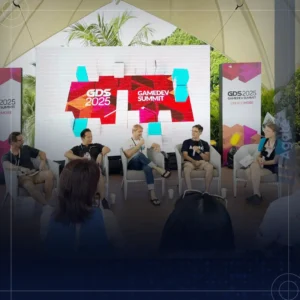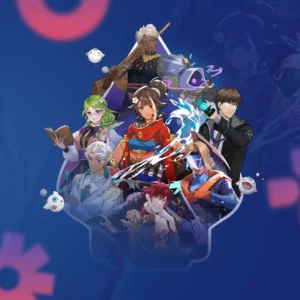Game concept art is a visual representation of a game’s design and aesthetics. It is the first step in the game development process, where artists create sketches and drawings that depict the game’s characters, environments, and objects. This artwork plays a crucial role in establishing the game’s overall style, theme, and atmosphere, allowing developers to create a consistent look and feel throughout the game.
Why is it important?
Game concept art plays a vital role in game development; without it, games would lack personality and direction. Despite the trend favoring photorealistic visuals, games like Stardew Valley and Minecraft are still popular because they have distinct visual identities.
Concept art helps the development team identify potential design flaws, explore different ideas, and refine the game’s mechanics before production begins by creating a visual representation of the game. This way, game concept art can save developers a lot of time, money, and effort in the long run, ensuring that the final product meets the expectations of players and stakeholders. In other words, game concept art is crucial for the creative process and the game’s success in the competitive gaming industry.
Furthermore, high-quality game concept art is a powerful tool in securing funding for the game. It can persuade investors, publishers, and potential players that the game is worth their time and money. In some cases, game concept art even becomes a part of the game’s marketing campaign, generating buzz and excitement before the game’s release.
Types of Game Concept Art
There are different types of game concept art, and each serves a specific purpose in the game development process. Here are some of the most common types of game concept art:
Character Design
This type of concept art focuses on creating the game’s characters. It involves creating sketches and drawings of the character’s appearance, clothing, and accessories. Character design is essential in defining a game’s style and tone, and it helps create memorable and unique characters. Creating a character with a unique design can be tricky. A perfect example of a game character that defies all logic and has become an icon in the gaming industry is Mario, a plumber in a mushroom world who must save a princess from a fire-breathing giant turtle. Even though this story seems improbable, Mario’s unique character design has made him one of the most recognizable and beloved characters in the gaming world.
Environment Design
Environment design is all about creating the game’s settings and locations. It includes drawing landscapes, buildings, and other elements that make up the game’s environment. Environment design is crucial in creating an immersive and believable world for players to explore and interact with. One of the greatest environment designs can be found in “Gaea” from Final Fantasy VII. The locations in the game range from lush forests to sprawling cities, and each has its distinct atmosphere and mood. The attention to detail in the environment design of Final Fantasy VII is what helped to make it a beloved classic among gamers with deep story lore, as it genuinely transported them to a rich and vibrant world full of wonder and adventure.
Object Design
Object design involves creating the game’s objects, such as weapons, vehicles, and items. It focuses on creating functional and visually appealing objects, and it helps create a cohesive and consistent world. One of the best examples is Blades of Chaos from God of War. The Blades of Chaos are a pair of chained blades that Kratos, the game’s protagonist, wields throughout the game. The design of this weapon is crucial to the gameplay mechanics, as they allow Kratos to perform various attacks and combos, making combat more fluid and satisfying.
It’s worth mentioning that some of the examples have a very well-designed and engaging story. Therefore, it is imperative to ensure that the game concept art is not only visually stunning but also complemented by a narrative that does justice to the game’s overall aesthetic and gameplay. By giving the concept art a deserving and engaging storyline, developers can elevate the game’s overall experience and leave a lasting impression on players.
Choosing the Right Partner
Choosing the right partner to help with game concept art can make a significant difference in the success of a video game. Creating game concept art requires specific skills and experience, including a deep understanding of game design, art theory, and production pipelines. Therefore, finding a partner with the necessary expertise who can work collaboratively with the game development team to bring their vision to life is crucial.
A good game concept art partner should be able to provide a range of services, including creating sketches and concept art, designing characters and environments, and helping to establish the game’s overall visual style. They should also have a keen eye for detail, be able to work within tight deadlines, and have experience in the video game industry.
Another essential factor to consider when choosing a game concept art partner is their ability to work collaboratively with the game development team. The partner should be able to listen to the ideas and feedback of the team and incorporate them into their designs. This collaborative approach ensures that the final game concept art accurately reflects the creative vision of the development team.
Conclusion
In conclusion, game concept art is a crucial aspect of game development, visually representing a game’s design and aesthetics. It helps developers establish the game’s style, theme, and atmosphere, allowing them to create a consistent look and feel. The different types of game concept art, including character design, environment design, and object design, serve specific purposes in the game development process, helping to create immersive and memorable gaming experiences for players worldwide. With the right partner, developers can create game concept art that accurately reflects their creative vision and helps to bring their game to life.







